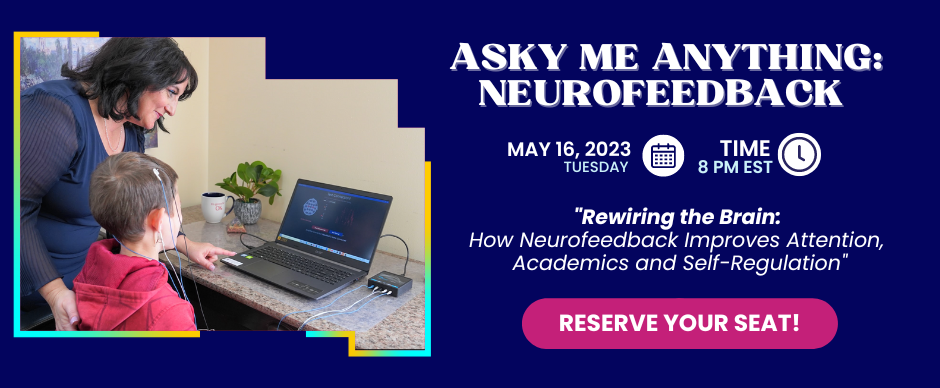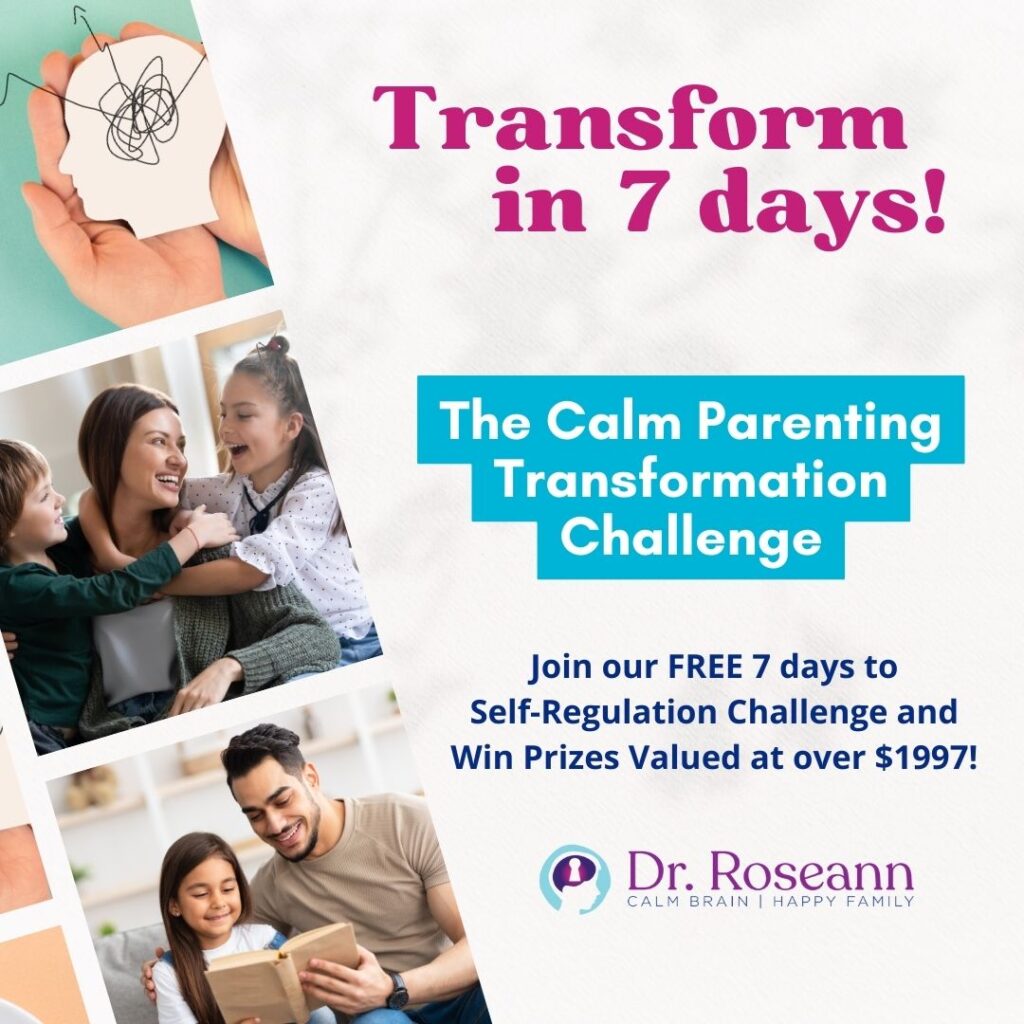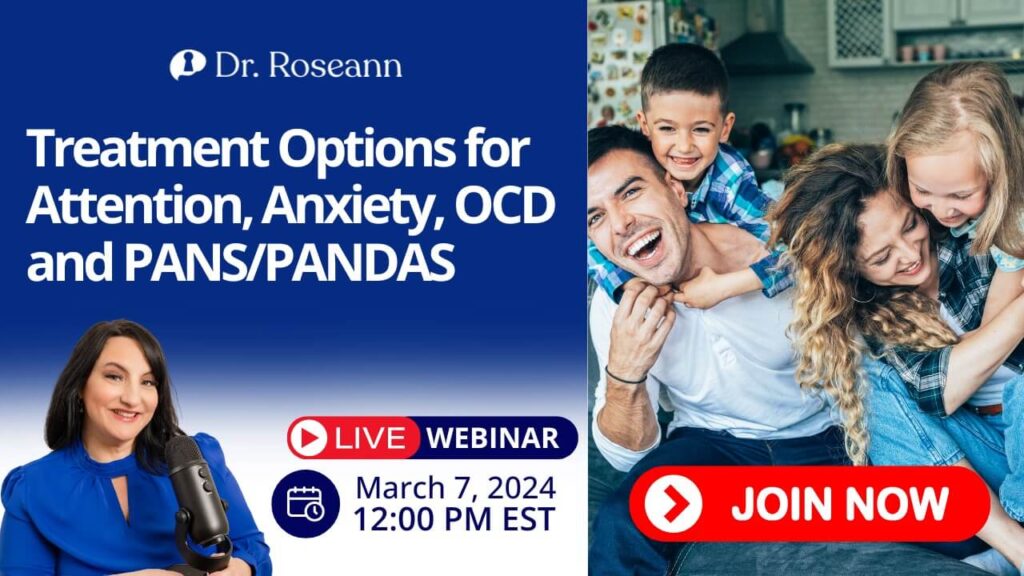
Thousands of research studies show how effective neurofeedback is in treating symptoms that are related to everything from attention deficit hyperactivity disorder (ADHD), anxiety, and obsessive-compulsive disorder (OCD) to Pediatric Acute-onset Neuropsychiatric Syndrome (PANS) and Pediatric Autoimmune Neuropsychiatric Disorders Associated with Streptococcal Infections (PANDAS).
Neurofeedback is a powerful tool that helps calm and regulate the brain. It is highly recommended that you use this therapy and help your child improve his or her mental health.
We have to follow research because when we do, we know that we’ll have solutions. Continue keeping your head up and just know that it’s gonna be okay.
Why and how is neurofeedback a powerful and helpful tool?
There are many ways to calm and regulate the brain, but neurofeedback is a powerful one, if not the most powerful available treatment out there.
One of the best things about neurofeedback therapy is that it is an evidence-based approach with thousands of research studies for over 50 years to show its efficacy. Undoubtedly, it can help with countless problems, including ADHD, learning problems, post-traumatic stress disorder, headaches, immune system problems, processing, and many more.
Another good point to raise as to why neurofeedback is such a powerful tool is because it regulates the brain waves. In this process, there is a positive cascade that happens. Many factors affect the functions of neurotransmitters besides medication, and these brain waves are one of those.
Neurofeedback, being the powerful tool that it is, directly manipulates these brain waves. With this, we can turn on understimulated areas of the brain and reduce overstimulated areas of the brain.
Why are there many research studies about neurofeedback and people with ADHD?
Many research studies tackle the topics of neurofeedback in relation to people with the first condition that we’re going to discuss – ADHD. The reason for this is that the changes and the symptoms in people with ADHD are easily observed.
We usually see impulse control, behavioral regulation, hyperactivity, and inattentiveness. Those are all observable, so when we see those manifested in our child’s behaviors, we know we have to do something.
What happens in the brain of someone with ADHD?
For people with ADHD, what happens in their brains is that it becomes understimulated. We’ll see that in a range of inattentive behaviors. We’ll know that there are too many unfocused brain waves and not enough focused ones if we check brain activity through brain mapping.
Everybody with ADHD has executive functioning issues, but not everybody with executive functioning issues has ADHD. They can have primary anxiety, primary OCD, primary autism, or others. You can learn more about it in another blog post: https://drroseann.com/what-is-executive-function-disorder-and-how-is-it-different-from-adhd/.
What is executive functioning?
Attention is the brain's ability to alert, whereas the second condition, Executive Functioning, is the brain's ability to take planned action toward a goal.
In relation to self-regulation, executive functioning is important to improve your child’s learning and development. It also enables you to create positive behavioral changes and to make healthy choices for yourself, your children, and your family.
What does an anxious brain look like?
Anxiety is a nexus for another condition – OCD. In case you’re wondering what an anxious brain would like, it looks like a brain on fire as it is being overstimulated.
So there’s a lot of overstimulation, which is where neurofeedback plays a vital role. It helps improve neurotransmitters and directly trains brain waves. It also pulls you out of a stress-dominated sympathetic rev state and pulls you down into a parasympathetic state.
When you’re in an anxious state, you’re in survival mode. It can feel unsafe for people in this state to relax too deeply and too quickly. The good thing about neurofeedback is that it stops those looping thoughts you have and pulls you out of those uncomfortable body sensations in a gentle way.
Neurofeedback produces lasting changes over time, and it does not involve medication and will work without it. However, neurofeedback therapy must be coupled with behavioral changes that we deem important.
What do we see in a depressed brain?
Depression is usually a depletion of physical and mental health and is usually caused by adrenal burnout and exhaustion. At present where we live in such anxious times, it is not surprising that anxiety is the leading mental health condition in the United States that has long surpassed depression.
When we look into the brain of a depressed individual, what we see is understimulation and overstimulation of the brain. A lot of what we see there is the brain’s inability to protect itself; it is worn out.
If in an anxious brain, there is an overdrive, a depressed brain no longer has those regions that are protected in emergency states. The affected part is the occipital lobe pointing to a region we call the emotional e-break wherein no matter what’s going on, you can flood out everything and replace it with happy brain waves.
For a depressed brain, it’s mainly about calming areas that are overstimulated and turning areas back on that are no longer working. Neurofeedback allows that to happen in a way that nothing else can.
What characterizes chronic mental illnesses, and what can we do about it?
Chronic mental illness is a condition characterized by persistent debilitating psychiatric symptoms and severe functional impairment. One of the factors that cause chronic mental illnesses is a stressful life, may it be financial problems, academic pressure, or family arguments.
The brain and the body will not allow themselves to heal in such a state. What we need to do is address the symptoms. So we shift it from a sympathetic dominant to a parasympathetic state. Once we achieve that, the brain can finally heal itself.
How does neurofeedback affect learning problems?
When you encounter people, especially children, with learning problems, it’s going to be challenging. They have all these thoughts and questions that we’re never really prepared for. And so, it makes our brain processing go to another level.
It all boils down to brain dysregulation, which shows up in a lot of ways. So, it’s best that you highly consider neurofeedback as a natural and safe way to calm the brain and bring the happiness back to your family.
Watch out for more episodes where we dig in more into these topics!
No matter where you are in your journey, we have resources to help you:
No matter where you are in your journey, we have resources to help you:
Is It ADHD Or Something Else?
If your child is struggling in ways that make you wonder if they have ADHD, I've developed a quiz to tell you if your child has ADHD, or if it's something else that should be on your radar. It's FREE to take the quiz, and you can get your results immediately.
➡️ “Is it ADHD or something else?” Take the quiz.
➡️ Join our FREE Natural Parenting Community to receive science-backed resources for your child and family. Join here.
➡️ Get help from Dr. Roseann and her team. Apply here.








